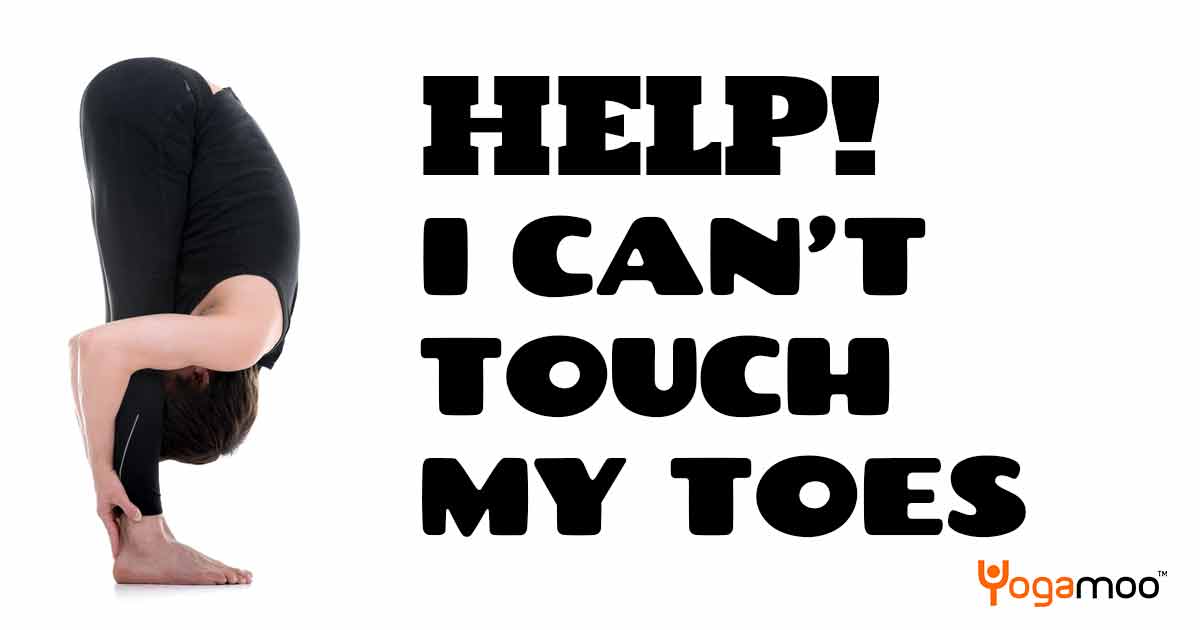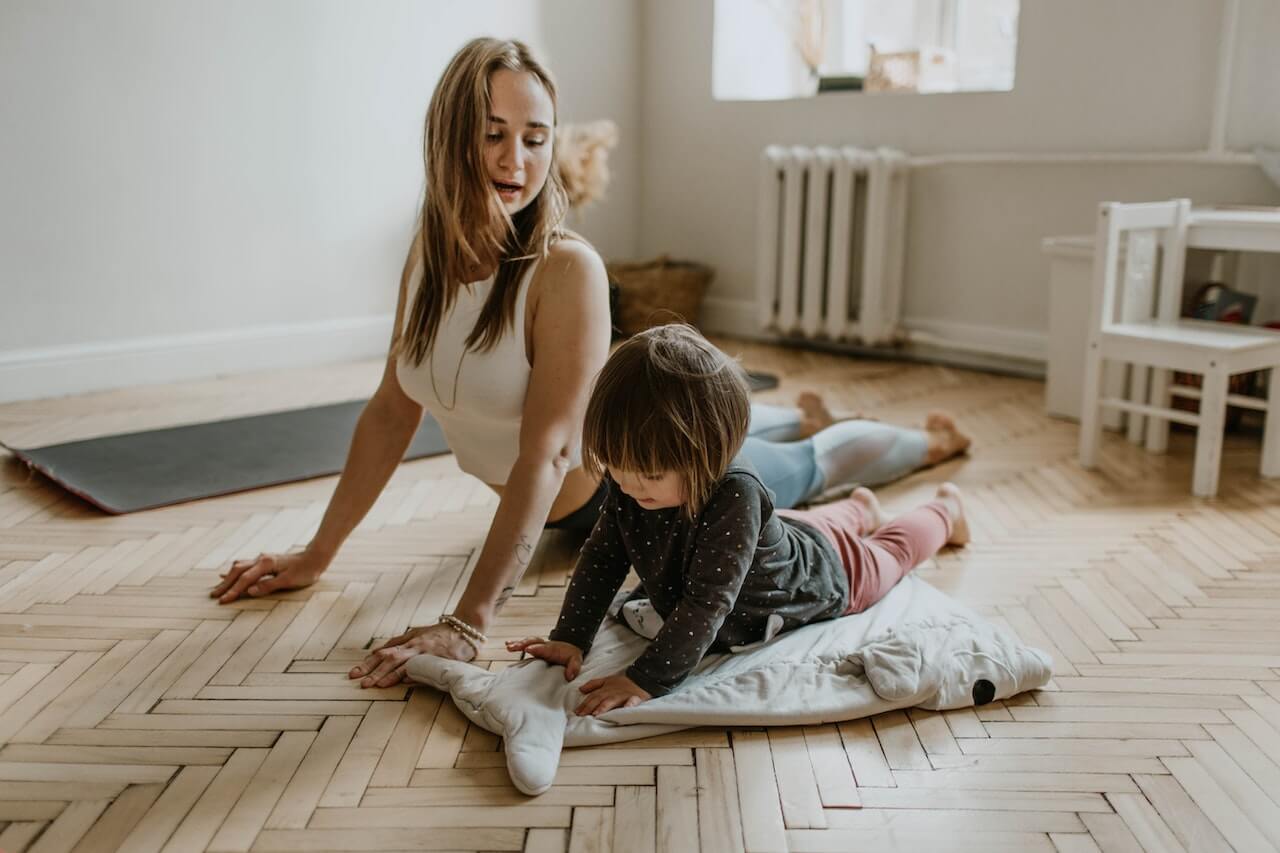It is common for people to be unable to touch their toes when bending forward with their legs straight and be inflexible for yoga. I am consulted about this as a yoga teacher on a regular basis.
For some, this can be a major obstacle for enjoyment of yoga class in the early stages. This feeling is very understandable. Uttanasana, or full forward fold from standing, is one of the most frequently used yoga poses. For the student who cannot bend forward easily – due to stiffness in the legs, back or hips – yoga class can become an extremely challenging or even uncomfortable experience.
In this article I present some tips to students to help make yoga class an enjoyable experience and to help them (eventually) be able to touch their toes. Before I start my list, I want to let you all in on a little secret. When I started yoga I could not touch my toes either! (Shh, don’t tell anyone, the internet can be a very busy place!)
Inflexible for yoga?
Honour where you are
This can only come from yourself. Notice any feelings that come up about certain poses, like toe touching. You are in class to learn, to receive information and be helped. It is not a contest of flexibility or physical prowess. It doesn’t matter if you are the least flexible person in the room – there may come a time when you are the most flexible, this also does not matter – what matters is your process and your experience.
When I first started yoga I was in a lot of physical pain. I had a slipped disc in my low back and sciatica down my right leg. My hamstrings were locked tight because my body was constantly trying to protect me. I would go to yoga trainings and without a doubt I would have the tightest forward fold in the room. I was practicing Uttanasana with my knees bent for a long time. Now when I go to trainings I am sometimes the most able person in the room. What is important though is that I gained control of my own life, my own pain and my own experience, not whether I am ‘better’ or ‘worse’ than anybody else. A yoga class should be a group of friends supporting each other in their own journey, not a group of contestants in a bizarre yoga ‘game-show.’
Turn an obstacle into a (long-term) goal
I am not against goal setting in yoga practice, even in physical yoga practice. It is common for yoga students, both men and women, to say to me – ‘I really want to be able to touch my toes.’ Uttanasana is used in most yoga classes and it is a gateway pose to a huge number of other yoga poses. So is it a goal worth having? I would say yes. It is good to have goals for motivation and to mark your progress.
Time and intelligent effort
Some yoga poses take time to achieve. This is a reality. Even with a range of techniques and regular practice, it can still take time to lengthen and strengthen chronically tight or weak muscles. Part of honouring the yoga journey is to try to recognise and celebrate every little progression, no matter how small. You cannot force progress only work consistently and intelligently towards it.
Mobilise the pelvis
Often it is the muscles of the legs that restrict a forward bend, usually the hamstring muscles in the backs of the legs, but this can be accompanied by limitation in the movement of the pelvis itself. For this, practice Pelvic tilts – moving the pelvis in isolation in all fours position. Stabilise the arms and legs and try to move as directly from the pelvis as possible. It can help to visualise a giant bowl tipping forward and back. Proficiency in this movement is key to initiating the forward fold movement from the hips. It can be tricky to move this area on its own at first and using a mirror can be a useful tool to assist the attention and awareness needed.
Loosen inner hips
Movement from the pelvis may be difficult if there is tightness in the structures of the hips. Frog pose (All fours with the knees spread as wide as possible) is a good pose to loosen the adductor muscles of the inner hips. Focus on softening the groins and moving the tops of the thighs back in the hip sockets as you lightly draw the lumbar spine in to create a slight lumbar curve.
Open the hamstrings
Tight hamstrings will often limit progress in Uttanasana. Practice Supta Padangusthasana (Reclined Hamstring Stretch) with a belt. Keep the raised leg slightly bent at the knee if you need to, but position that knee above the line of the hip. Focus on rooting the top of the thigh bone of the raised leg downwards towards the bottom of the mat as you gradually extend that leg straight. Hold for longer than 45 seconds to overcome the stretch reflex and focus on a slow, even breath.
Make the pose accessible
Bending the knees in Uttanasana, placing the feet a little further apart or raising the height of the surface by placing hands on blocks or furniture are just a few strategies to make this pose more accessible and safe.
There are many bent knee yoga positions that you can also work on to help you to open the hips, back and hamstring muscles – lunge position, rotated lunges, Utkatasana (Chair) and Ananda Balasana (Happy baby) are good examples.
These preparations and modifications are helpful to achieve a flexible Uttanasana. It may seem a long journey but it is not an impossibility. With consistency, you will soon experience the beauty of yoga practice that is moving from the (seemingly) impossible to the possible. Best wishes in your yoga journey.


Pls help me
Very well explained.one thing is missing that’s our back.we have to keep our back bone straight other wise it will be painful.practcing uttanasa should be started from the wall.